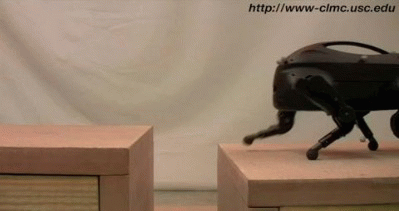In a Frontiers opinion piece, University of Melbourne research fellow Jean-Loup Rault wonders if pet ownership will become morally unacceptable and environmentally unsustainable in the next 35 years, as animal-rights sensibilities shift and population grows, with digital and virtual pets filling the void. “Funerals are held for AIBO robotic dogs in Japan nowadays,” writes the doctor, demonstrating the emotions we can attach to AI.
I’m guessing Freeman Dyson would argue that this would be just an intermediate step, and children will eventually play with specially designed biological creatures that don’t use resources but create them. I don’t know if either will happen in the next 35 years or at all, though I would assume household robots will take on a more prominent role.
The opening:
Over half the people in Western societies share their daily life with pets, which makes it the norm rather than the exception. Our shared history with domestic animals goes back tens of thousands years. However, technological advances in the last decades – computer, internet, social media – revolutionized our means of communication, and particularly our social lives. A legitimate but tacit question is whether this technological evolution will also change human–animal relationships, and concurrently, the place of pets in human societies. Pet ownership in its current form is likely unsustainable in a growing, urbanized population. Digital technologies have quickly revolutionized human communication and social relationships, and logically could tackle human–animal relationships as well. The question is whether these new technologies actually represent the future of pet ownership, helping tackle its sustainability while solving animal welfare issues.
To consider whether new technologies could substitute animal use, one should first consider the reasons for keeping animals, and particularly pets. Domestication started some 18,000–32,000 years ago with dogs. However, today’s pets cover a wide range of species from mammals, birds, and fish to the more ‘exotic’ reptiles, arachnids, and even insects. One of the many definitions of a pet is “a domesticated animal kept for pleasure rather than utility” (Merriam-Webster Dictionary), although non-domesticated species are increasingly popular. The benefits or function that humans derive from pet ownership are still debated. It may be a cultural habit: “I had a pet growing up, so it is normal to have one,” even though for some people the only interaction with their pet is restricted to providing food and water and no other forms of social interaction, hence only partly fulfilling our ‘duty of care.’ Pet ownership could be a sign of status: dog ownership can be interpreted as an economic indicator, highly correlated with rise in countries’ income. Pets may be used to compensate for lack of social relationships, as pet owners report feeling less lonely, although there are evidence that pets facilitate human social interactions. A widespread theory holds that pet ownership brings health benefits. Alternative explanations are, for instance, that pet ownership may improve reproductive fitness given that people more easily approach someone walking their dog. Nevertheless, some scientists remain dubious, citing inconsistent findings on the benefits of pet ownership (1). Irrespectively, the human–animal relationship is a strong and emotional powerful bond: pets are often considered part of the family, and dogs and children activate common brain regions in mothers (2), drawing on the hormone oxytocin (3). Historically, the human–animal relationship has already been a changing concept, from animals for their consumptive value to ‘reservoirs of human need’ such as love and care (4). However, we are possibly witnessing the dawn of a new era, the digital revolution with likely effects on pet ownership, similar to the industrial revolution which replaced animal power for petrol and electrical engines.•
Tags: Jean-Loup Rault

